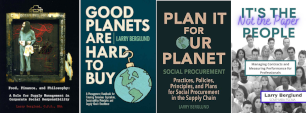Organizations need to respond to stakeholder expectations. One of the more effective means to do so is to develop environmental and social governance (ESG) policies in the supply chain.
ESG includes evolving practices such as social procurement; supplier codes of conduct; environmental responsibility; supplier diversity; resilient supply chains; and balancing local benefits within a global market.
ESG in supply chain policies and practices should align with the United Nations Sustainable Development Goals (UNSDG). These internationally vetted outcomes directly impact supply chain strategies and business practices in the public and private sector.
The Demand side in the public sector sets objectives and standards which the Supply side seeks to satisfy. Lowest cost was good; but not good enough. Best value takes ESG into consideration and on to the next level. The next level is where we are going and where price is still important but less critical as an out-of-pocket metric as a determinant of value.
In the long-term, the next level is where supply chains meet ESG within the circular economy. This interactive webinar will look at where and how public sector supply chain leaders will need to adapt to be effective resources to their communities.
Learning Objectives
- Explore ESG as the means to transform the definition of value
- Identify the next level as a driver in a long-term supply chain strategy
- Discuss the raison d’etre for ESG in supply chains
- Differentiate between lowest cost and best value in today’s market
- Examine the intersection of the UNSDG and supply chain strategies

